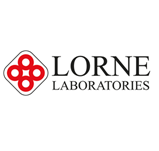What is Western Blotting?
29 April 2015

The term "blotting" basically refers to the transfer of biological samples from the gel to the membrane and the subsequent detection on a membrane's surface. Western blotting (which is also known as immunoblotting since an antibody is normally used to detect its antigen) was originally introduced by Towbin in the late seventies and is now a common technique used for protein analysis. Specificity of antibody antigen interaction generally enables the target protein(s) to be identified amidst the complex protein mixture. The western blotting technique can produce both qualitative and semi quantitative data about a specific protein.
Western blot analysis may detect a single protein in a complex mixture of a number of different proteins while also giving you data about the actual size of that protein. It doesn't matter whether that protein has been synthesised in vitro or vivo. This particular method is, however, much dependent on use of a high quality antibody which is directed against the desired protein. The antibody is used as the probe to detect the desired protein.
How Blotting Works
In Western blotting, the proteins from samples are generally separated based on size and their charge through the technique known as gel electrophoresis. The protein(s) are transferred to either nitrocellulose or PVDF membranes, and the solution containing the antibody is added. The antibody is specific for the protein that the researcher is looking for. Next, the solution containing a 2nd antibody that's specific for the 1st antibody gets added. The 2nd antibody is labelled with, most commonly, Horse Radish Peroxidase (HRP), a radioactive isotope, or another label that enables easy detection.
TrueBlot
TrueBlot® (Rockland Inc) is the name for one of the conjugated immunoassay detection reagents which enable unhindered detection of molecules. Conventional HRP or fluorescent label is substituted with sheep, mouse, rabbit or goat TrueBlot to get unparalleled clarity and a higher quality imaging which is suitable for reproduction. TrueBlot preferentially detects native disulfide forms of goat, mouse, rabbit, and sheep IgG, hence making it ideal for various protocols, which involve immunoblotting quantification of the immunoprecipitated protein(s) and detection of target molecules.
TrueBlot is highly specific and reduces interference by the ~55 kDa heavy and ~23 kDa light chains of the immunoprecipitating antibody in IP/immunoblotting applications, making data even more explicit. TrueBlot is also ideal for studying post-translational protein modifications, including phosphorylation, or protein-protein interactions.
TrueBlot IP Beads demonstrated a great binding affinity as compared to the experiments that used protein G or protein A.

Share




